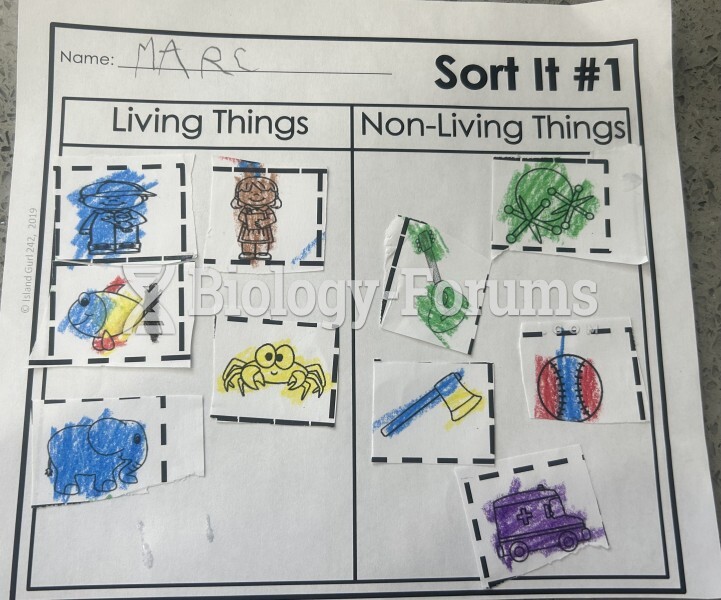Answer to Question 1
We live in a highly connected world of smartphones and mobile computers. However, there is another level of connectivity that most people don't notice. Connected devices with sensors, on/off switches, and Internet linkages already outnumber the world's population and the gap is accelerating. This Internet of Things (IoT) includes Apple watches, Fitbit trackers, and other wearables, home automation systems, electronic toll passes, and other devices used daily by people.
A broad range of IoT business equipment, devices, and mechanisms are already in use. Gartner conservatively estimates that by 2020 there will be more than 26 billion connected devices. Gartner indicates that the IoT trend will influence how supply chains operate.42 Hence, it is an innovative or disruptive technology that warrants attention.
The technology will allow supply chain managers to intelligently connect people, processes, data, and things using IoT devices and sensors. This deeper intelligence will be used to align, synchronize, and automate supply chain activities. Examples of how IoT can enhance supply chain performance include:
Right-sizing inventory levels use sensors to monitor inventory levels in fuel tanks. Trigger a replenishment request when inventory is nearly depleted.
Modifying storage conditions monitor container and facility climate. Adjust temperature and humidity levels to avoid spoilage of food and pharmaceuticals.
Enhancing in-transit visibility track status of shipments as they move across the network. Send new routes to drivers to avoid congested roadways.
Calibrating factory machinery capture equipment performance data. Remotely adjust machine settings or dispatch a maintenance worker for repairs.
Future IoT innovations may radically alter the way supply chains serve end users. It is entirely possible that sensors connected to your refrigerator or your computer printer will be able to track your product usage and trigger automatic replenishment of milk, eggs, and ink cartridges. You will never experience a stockout and the retailer will operate in a true demand-responsive fashion.
Mobile connectivity is critical in the transportation area as freight companies must grapple with the competing objectives of maximizing service and minimizing costs. They need a continuous link with their geographically dispersed drivers, equipment, and cargo. Enhanced geographic information systems data along with real-time and predictive traffic data are needed to effectively plan routes, determine dispatch times, and re-route in-transit freight. These capabilities will help the freight companies to accurately predict arrival times, reduce delivery costs, and decrease energy consumption.45
Warehouse operations have long relied on RFID-enabled terminals on forklifts and hand held devices to direct employee activities. Yet, traditional labor management systems are PC-based and tie managers to the office. They need to spend more time on the warehouse floor to gain operational oversight and coach employees, according to a recent survey. Mobile tools and solutions will provide managers with access to critical productivity, workload management, and exception data regardless of their location. Such capabilities will allow managers to break away from the office and spend-much needed time directly engaging with their employees and improving throughput.46
Mobility is also a technology priority for manufacturing operations, according to a PwC global chief executive officer survey. Forward thinking manufacturers are integrating mobile capabilities into their quality systems. This allows real-time monitoring of supplier traceability, quality, and non-conformance and corrective actions. Mobile integration of configure, price and quote systems to pricing and inventory systems makes it possible for salespeople to rapidly give customer pricing and delivery dates. And, accessible dashboards on mobile devices will allow managers to monitor production workflow performance. The goal of these initiatives are to make manufacturers more responsive to customers and make manufacturing intelligence the new normal in production operations.47
Automation has long been a part of the manufacturing plant with conveyors moving products between workstations and robots handling welding, painting, and other precision tasks. Warehouse automation has also gained tremendous traction as companies are opening large scale distribution centers that deploy automated storage, handling, and distribution technologies rather than manual labor. Fulfillment speed and accuracy two essential elements of omnichannel retailing are greatly enhanced and there is never an absenteeism issue.
In contrast, the transportation function continues to be a labor-intensive activity, particularly the trucking industry. Connective technologies needed to support driverless vehicles are under rapid development. Companies like Daimler AG, Google, and Komatsu are spending significant resources to develop autonomous vehicles.
Daimler's Future Truck 2025 navigates using its Highway Pilot system, enabled by a collection of cameras and radar sensors, while continuously transmitting its position to other drivers and traffic control centers. The pilot program puts a driver in the vehicle to handle driving on city streets. However, it relies heavily on the operational system for highway driving much like an auto-pilot system for an airplane during normal flight operations.48
The promises of driverless vehicles are many. First, the prospect of safer truck operation is strong due to the multitude of sensors being used and the elimination of driver fatigue as a crash factor. Second, the driving system is designed to operate at maximum fuel efficiency and reduce emissions. Finally, the technology may be able to address the chronic shortage of truck drivers that hampers industry capacity.49 This is a long-range prospect as much more testing and proof of concept will be needed to gain regulatory and public acceptance of truly driverless vehicles.
Without question, the innovations described above have the potential to drive SCM to new levels of performance. The same is true for future solutions that are in the concept phase today. The only way to keep up with the ever-changing technology landscape is to continuously monitor industry developments.
Answer to Question 2
True







